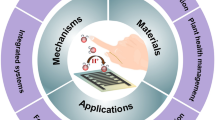Abstract
With an increasing online transaction of textile products and the current inaccessibility of their tactile properties to consumers, it is necessary to know the feasible manners in which the fabric softness sensation was perceived. Therefore, this study examined the accessibility of the tactile softness of fabrics by three different modalities, i.e. touch only, vision only (viewing video with fabric fluttering in a wind) and touch-vision bimodality. To compare the perceived softness sensation by three sensory modalities, two blocks of psychophysical experiment procedures were designed. The rating values were used to analyze the consistency of perceived softness magnitude among three sensory modalities, and to explore the physical determinants corresponding to each of three modalities. Meanwhile, both the just noticeable difference (JND) and the Webber fraction were calculated and compared among three different modalities. The results showed that it was statistically consistent of the magnitude of perceived softness sensation among three sensory modalities. The main physical determinants of perceived softness sensation were similar among three sensory modalities, whereas their contribution proportion depended on the specific modality. Psychometrically, the detectability by vision only were lower than that by touch only or touch-vision bimodality, and the discriminability by two modalities with tactual information was superior to that by vision only. Generally, it was concluded that blocking the view of the panelists was not a requirement for estimation on perceived softness intensity of fabrics, while in discrimination task the method with visual information couldn’t replace that with tactual information.
Similar content being viewed by others
References
S. J. Lederman and R. L. Klatzky, Atten. Percept. Psychophys., 71, 1439 (2009).
D. P. Bishop, Text. Prog., 26, 1 (1996).
H. Binns, Br. J. Psychol., 27, 404 (1937).
S. L. Paek, Percept. Motor Skills, 60, 335 (1985).
P. Dillon, W. Moody, R. Bartlett, R. Scully, R. Morgan, and C. James, Lect. Notes Comput. Sci., 2058, 205 (2001).
J. Laughlin, Int. J. Cloth. Sci. Tech., 3, 28 (1991).
S. Kobayashi and M. Tomizuka, Sen’i Gakkaishi, 46, 251 (1990).
R. Yenket, I. E. Chambers, and B. M. Gatewood, J. Sens. Stud., 22, 336 (2007).
M. Kuschel, M. Di Luca, M. Buss, and R. L. Klatzky, IEEE T. Haptics, 3, 234 (2010).
M. Konyo, S. Tadokoro, M. Hira, and T. Takamori, “International Conference on Intelligent Robots and Systems”, pp.3060–3065, Lausanne, Switzerland, 2002.
R. L. Klatzky, S. J. Lederman, and C. Reed, J. Exp. Psychol. Human, 19, 726 (1993).
S. Guest and C. Spence, Exp. Brain Res., 150, 201 (2003).
M. A. Heller, Percep. Psychophys., 45, 49 (1989).
B. Jones and S. O’Neil, Atten. Percept. Psychophys., 37, 66 (1985).
T. Cook, C. Wallraven, and H. H. Bullthoff, “Proceedings of the Ninth International Conference on Information Visualisation (IV’05)”, pp.33–40, IEEE Computer Society, Washington D. C., USA, 2005.
K. Drewing, A. Ramisch, and F. Bayer, “WHC’ 09 Proceedings of the World Haptics 2009 — Third Joint EuroHaptics Conference and Symposium on Haptic Interfaces for Virtual Environment and Teleoperator Systems”, pp.640–645, Salt Lake City, UT, USA, 2009.
M. A. Heller, Atten. Percept. Psychophys., 31, 339 (1982).
T. A. Whitaker, C. Simoes-Franklin, and F. N. Newell, Lect. Notes Comput. Sci., 5024, 319 (2008).
T. Whitaker, C. Simões-Franklin, and F. Newell, Brain Res., 1242, 59 (2008).
S. Guest and C. Spence, Int. J. Psychophysiol., 50, 63 (2003).
J. Hu, X. Ding, R. B. Wang, and C. C. Cai, Fiber. Polym., 10, 371 (2009).
M. Korman, K. Teodorescu, A. Cohen, M. Reiner, and D. Gopher, Presence Teleoperators Virtual Environments, 21, 295 (2012).
I. Fründ, N. Haenel, and F. Wichmann, J. Vision, 11, 1 (2011).
N. Pan, K. C. Yen, S. T. Zhao, and S. R. Yang, Text. Res. J., 58, 531 (1988).
W. M. Bergmann-Tiest and A. M. L. Kappers, IEEE T. Haptics, 2, 189 (2009).
G. Mazzuchetti, R. Demichelis, M. B. Songia, and F. Rombaldoni, Fibres Text. East. Eur., 4, 67 (2008).
J. Hu, Q. Zhao, R. Jiang, R. Wang, and X. Ding, Cog. Neurodynamics, 7, 441 (2013).
M. O. Ernst and M. S. Banks, Nature, 415, 429 (2002).
S. Gepshtein, J. Burge, M. O. Ernst, and M. S. Banks, J. Vision, 5, 1013 (2005).
Author information
Authors and Affiliations
Corresponding author
Rights and permissions
About this article
Cite this article
Yang, X., Hu, J., Ding, X. et al. Capability and limitation in evaluation on perceived fabric softness by three types of sensory modality. Fibers Polym 15, 2651–2657 (2014). https://doi.org/10.1007/s12221-014-2651-0
Received:
Revised:
Accepted:
Published:
Issue Date:
DOI: https://doi.org/10.1007/s12221-014-2651-0




